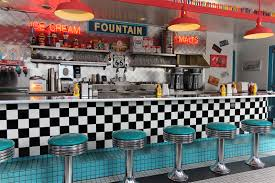First and always activate wellbeing
- Meet and greet
- Welcome
- Embrace
- Accept
- Honour
- Acknowledge
- Invite
“Play is what I do when everyone stops telling me what to do.” (5 year old)
“If everybody’s mad at you, why not have a party?”
- See
- Feel (not think/analyse, can’t separate thinking and feeling)
- Change
Ask parents to do a ‘learning walk’ through the school and ask them after what they feel. Schools need to be brave to do this.
ACTIVITY: A learning walk through the Study Tour and all the places we’ve been. Think of at least 2-3 things that really stayed with you. This process doesn’t have to end, we just pause it. Format on sticky note:
- I see/saw…
- I feel/felt…
- I wonder… (A wonder is bigger than a question, it leads to the future, to change)
Process of relational learning:
- Call (identifying the space)
- Sorrow (because you’re not there yet)
- Grace (to listen, move through conflict, hold the tension)
- Reconciliation (finding the third thing)
What do we do as professionals and leaders to ensure people know the map to get to where we’re going? How do we make sure no one gets lost? What is the map that facilitates a relational approach to education? Maps are best created when formed by wonderings/questions, rather than set criteria. The map is different to the territory. Everyone knows the territory, but we create to create the path through or towards it.
The relationship most, regardless of the school, the model of education. The key questions to finding the map (framework) for our school are:
- What is our educational and moral purpose? Every day we have to ask ourselves, what are we doing here?
- What are our underpinning beliefs about families, school and communities? How much influence does the school have? How much should it have? When do we get parents involved?
- What does ‘success’ look like? In a relational context, success is always going to be larger than what you DO, who you ARE, and what you HAVE
- Why are the relationships the key to educational success?
- How do we expand, improve and build new relationships to educate better?
Indigenous communities in particular are particularly frustrated when we try to bring them more frameworks, because they already have a framework that works. We need to figure out how to be in the room (school, classroom) without taking all the power. St Bernadette’s in New York has had a transformational change.
Life in classrooms:
- Immediacy – an acute sensitivity to the here and now
- Informality – the opposite of an emphasis on undue routine
- Individuality – interested in the well-being of individual students
- Autonomy – highly resistant to inflexible.
All learning is relational! Therefore the quality of the learning will also determine the quality of the learning. It’s all about the relationships (Michael Fullan) “People listen to me because they know I’m crazy and they don’t have to!” (George Otero)
 All relationships have a natural hierarchy, so this is true for learning in relationship:
All relationships have a natural hierarchy, so this is true for learning in relationship:
- Partnership
- Valuing
- Understanding
- Involvement
Buddhist view of teaching and learning is “when the student is ready the teacher will appear”. The internet is information, it’s not knowledge. The problem is we’ve turned education into a commodity where every aspects of it is a commercial product. We’ve emphasised that ‘the best’ is an individual best that is better than everyone else.
Relationalearning is about building trust and dialogue, and promoting engagement, motivation and connectness.
“The purpose of a school is to help a family educate a child.” (Don Edgar, Australian sociologist). If we don’t understand and practice this, the it doesn’t matter how many iPads a school has.
ACTIVITY: Ask yourself these three questions…
- What are we doing that is working that we want to maintain?
- What are we doing that is working that we to increase?
- What are three things (as a result of this study tour) that you want to explore/try out at your school?
Relational learning places the focus on five critical relationships to learning. We need to ask…how do we help students manage their relationship to:
- Self
- Peers
- Teachers
- Subject (relationship to curriculum, eg. Students using relational learning notebooks)
- Family
- Community?
Also for parents, staff, community.
Sitting in a circle is a real sign of leadership, because it diffuses power, there is no hierarchy in a circle. Allowing space and time to resolve tension means not buying into the pressure. We can close a reconciliation, but not end. End with a reflection, hope, appreciation, wish, thank you…whatever needs to be said to the group as a conclusion.
THANKYOU EVERYONE for a very moving and meaningful reflection circle. Your comments haven’t been recorded here, but pleas share them in the comments if you would like to. Please keep in mid that Namcy was absent from the reflection session and would love to hear people’s thoughts about the tour.















